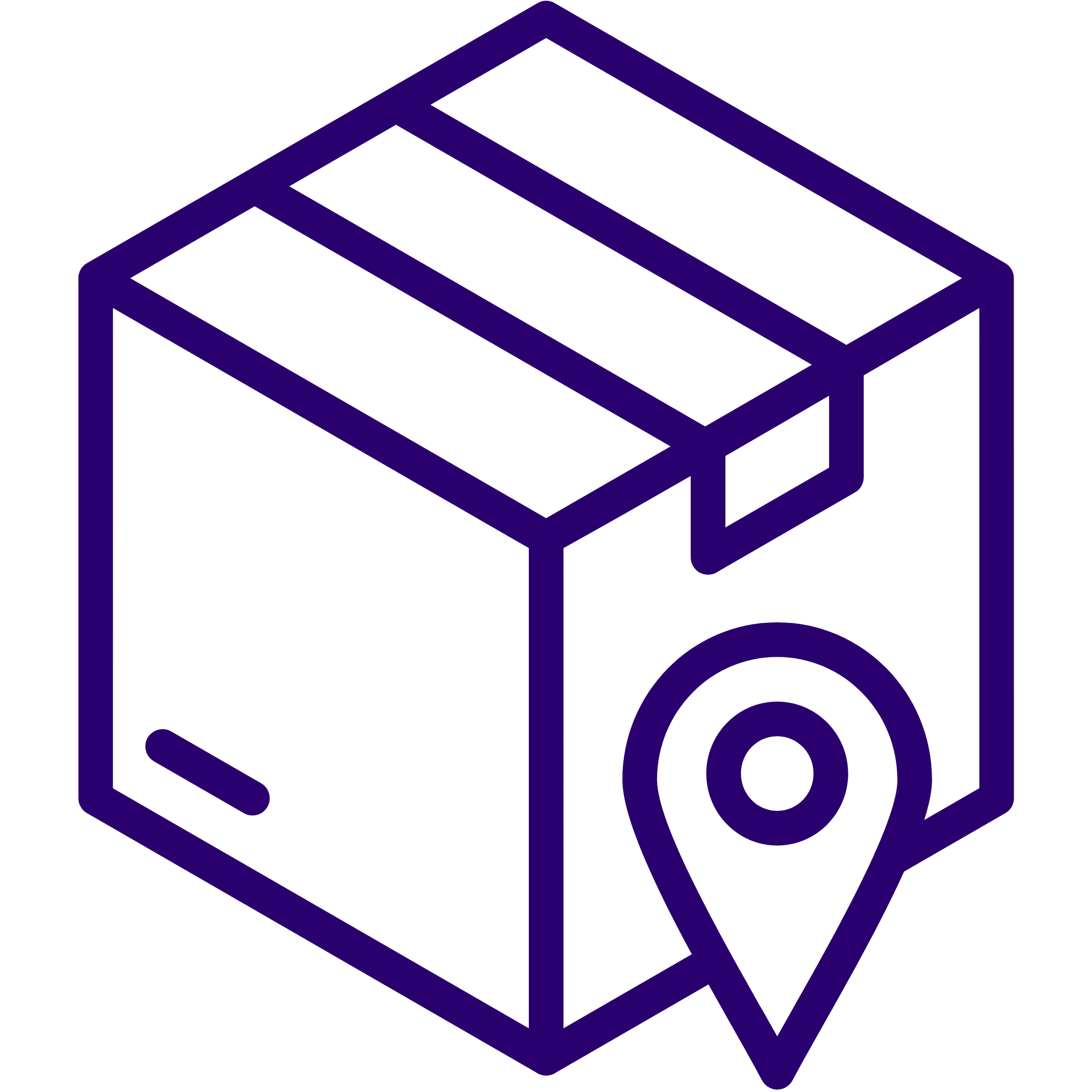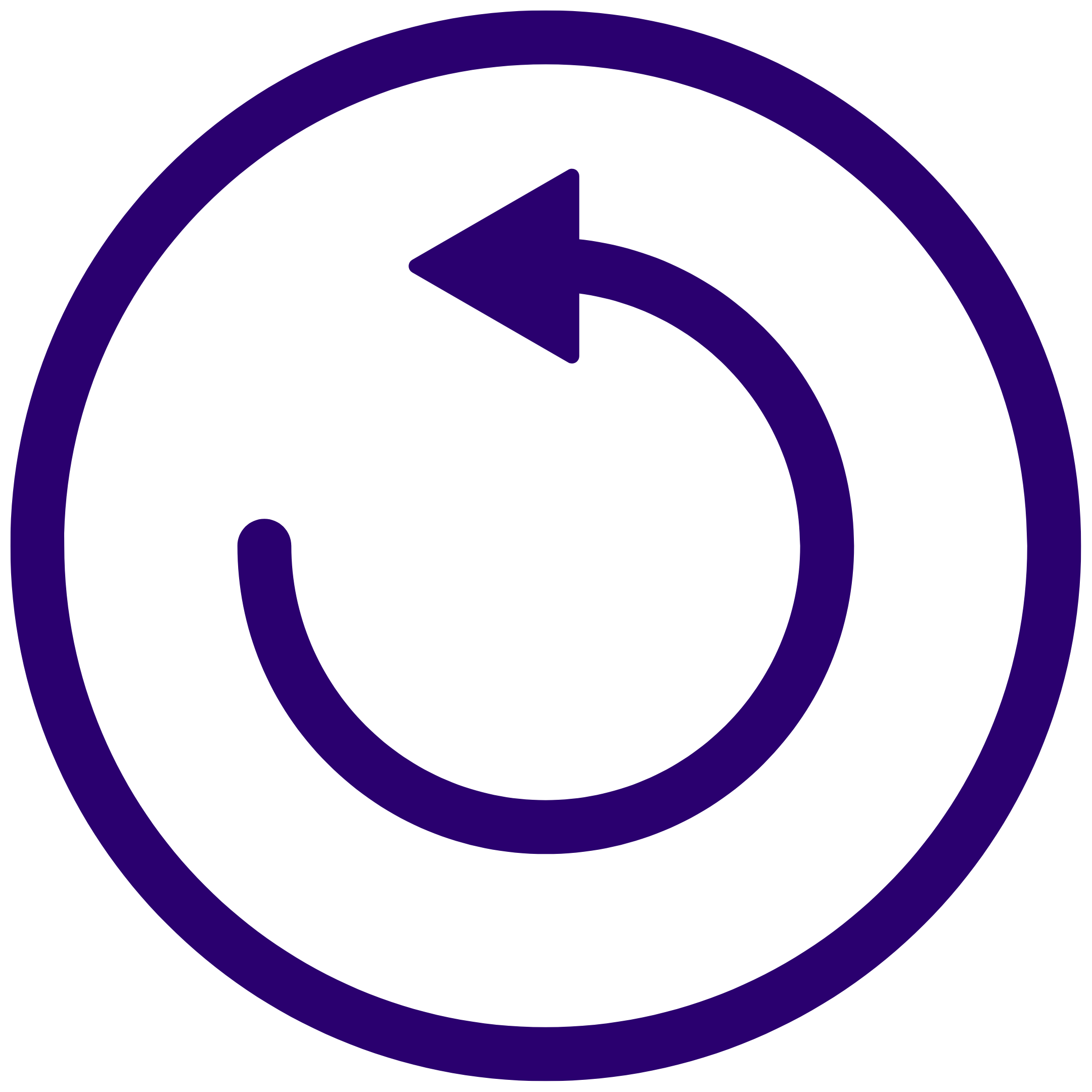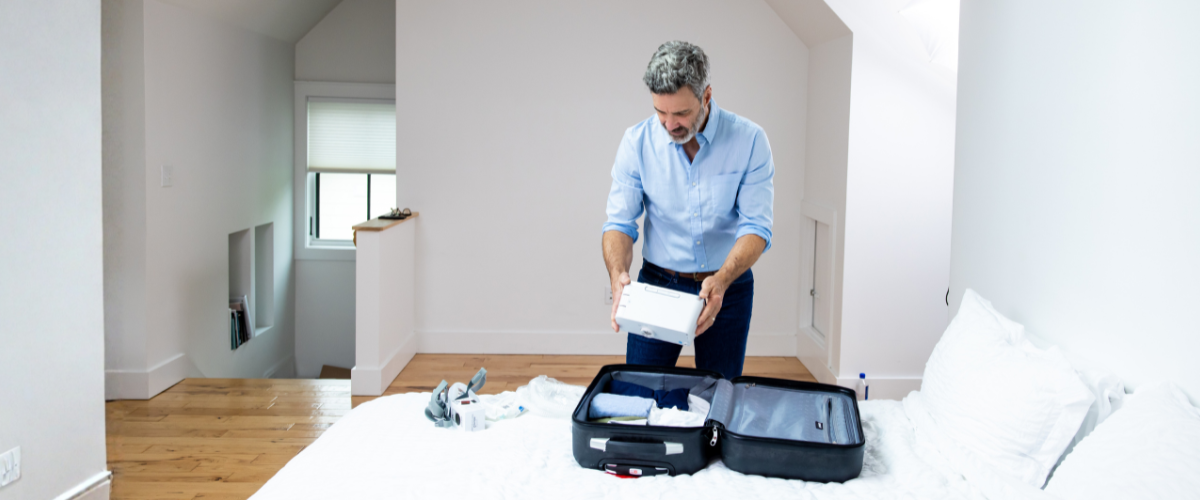Starting CPAP therapy for obstructive sleep apnea (OSA) can feel like a game-changer, and for many, it is. After months or even years of restless sleep and daytime sleepiness, finally getting steady, uninterrupted sleep can feel like a lifeline. But, while CPAP (continuous positive airway pressure) treatment is one of the most effective methods for handling OSA, it doesn’t come without a learning curve or chances for improvements.
Whether you’re just getting used to sleeping with a CPAP mask or adjusting to the steady flow of air pressure from your CPAP device, it’s common to run into a few bumps along the way. From nasal congestion, dry mouth and dry nose to bloating or mask leaks, these side effects of CPAP can make it tempting to quit.
The good news? Most common CPAP side effects are easy to fix once you know what’s causing them, and even easier to prevent with the right supplies and tips. Here are the most common CPAP-related issues and how to overcome them so you can sleep better, breathe easier, and stick with your therapy for the long haul.
1. Nasal Congestion and Irritation
What it is: Stuffy nose, dryness, a runny nose, or nosebleeds are common for new CPAP users. It is especially if you're already prone to allergies or sinus issues like recurring sinus infections.
Why it happens: Dry, pressurized air can irritate your nasal passages over time, especially if your CPAP machine doesn’t include a process for humidification or you're using it in a dry environment.
This is also common in those with high CPAP pressure. When not adequately humidified, a CPAP machine’s pressurized air can create inflammation in the nasal passages and irritate the tissues that line the nostrils which will often lead to dryness and congestion.
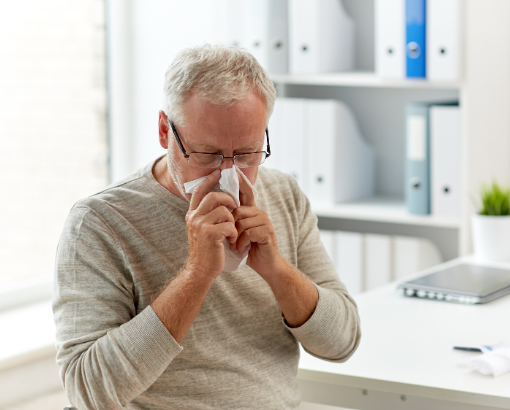

How to avoid it:
• Use a CPAP humidifier: Heated humidifiers add moisture to the airflow and soothe nasal tissues
• Add heated tubing: Keeps air warm and prevents condensation buildup.
• Try a nasal saline spray: Hydrates the nasal passages before bed.
2. Dry Mouth
What it is: A parched, sticky mouth or sore throat in the morning, often from sleeping with your mouth open during sleep apnea treatment.
Why it happens: Mouth leaks or mouth breathingduring CPAP therapy can dry out your mouth and reduce therapy effectiveness. Mouth leak occurs when you sleep with your mouth open and your air pressure escapes while exhaling.
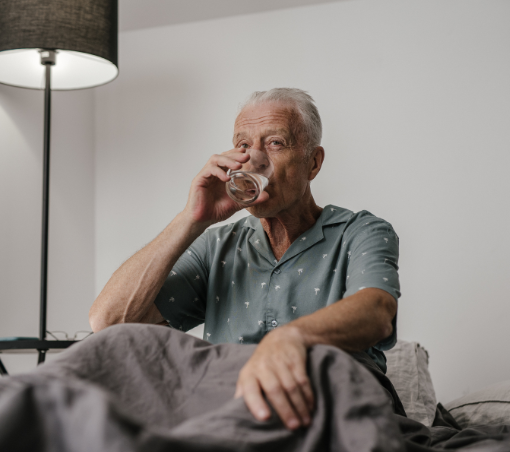

How to avoid it:
• Use a full face CPAP mask: Covers both the nose and mouth, ideal for mouth breathers.
• Wear a chinstrap: Keeps your mouth gently closed during sleep to prevent air leaks.
• Add a room humidifier: Humidification moisturizes dry air and reduces mouth and throat dryness.
3. Dry Eyes
What it is: Waking up with itchy, watery, or dry eyes.
Why it happens: Air escaping from your mask, often from a poor seal, can blow upward into your eyes throughout the night. If you wake up to dry eyes it’s a sure sign of a mask leak. The escaping air blows across your face, drying your eyes while you sleep. You may not even notice, as the amount of leakage can change with your sleeping position throughout the night.


How to avoid it:
• Adjust or replace your mask: The right mask with a secure fit is essential. Make sure your headgear isn’t worn out and that you’re using the proper-fitting mask cushion for your type of mask.
• Switch to a minimal-contact mask: Try out different nasal masks or nasal pillow masks, which are designed to seal better and reduce facial pressure.
• Use mask liners: Help reduce air leaks and protect sensitive facial skin.
4. Bloating, Gas, and Burping (Aerophagia)
What it is: Waking up with a bloated stomach, burping, or feeling gassy.
Why it happens: Swallowing air during CPAP treatment, especially at higher pressure settings, can cause discomfort. When the flow of continuous positive airway pressure becomes difficult to breathe against, it can end up redirecting into your esophagus.
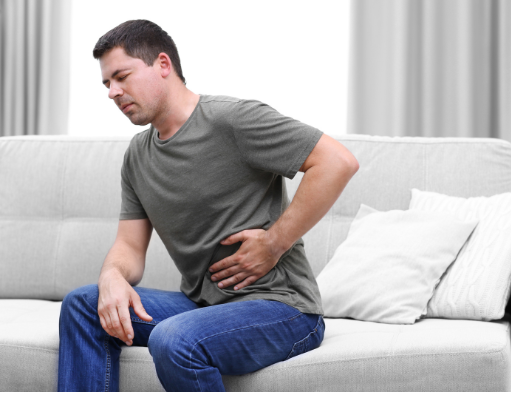

How to avoid it:
• Sleep with your head elevated: Prevents air from traveling down the esophagus.
• Consider a BiPAP (Bi-Level) or Auto-Adjusting CPAP Machine: If aerophagia continues or worsens, another solution is to try alternative treatment options and devices. Bi-level (BiPAP) machines in particular are a good option, as they reduce pressure during exhalation.
• Consult your healthcare provider about your pressure settings: You may need to have your doctor or sleep specialist lower your air pressure settings.
5. Difficulty Exhaling
What it is: Feeling like it’s hard to breathe out against the constant incoming air.
Why it happens: CPAP provides constant pressure, and for some users, this can feel like breathing resistance, especially at higher settings.
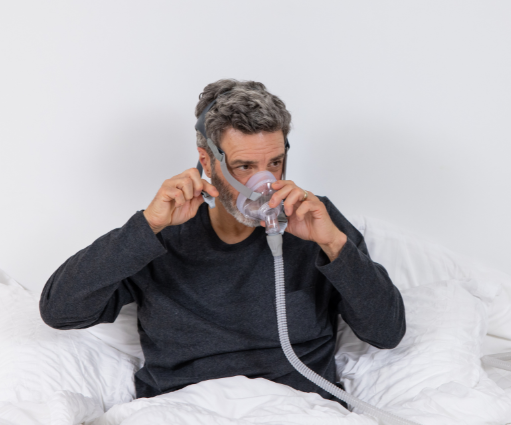

How to avoid it:
• Change your sleeping position: CPAP users who sleep primarily on their back may face extra difficulty handling the air pressure levels of their machine. The most recommended sleeping position is on one's side.
• Start slow: Use your CPAP during the day to get used to the sensation.
• Check your machine’s settings: Every standard CPAP machine will have an Exhalation Relief feature that can help reduce the amount of effort needed to exhale against the device’s pressurized air.
• Switch to a BiPAP (Bi-Level) Machine: If doctor-prescribed pressure adjustments and optimizing your machine’s comfort settings for exhalation relief don’t do the trick, you may need to speak with your doctor about potentially moving to a BiPAP (bi-level CPAP) machine instead because BiPAP machines offers lower pressure during exhalation.
6. Skin Irritation, Sores, and Acne
What it is: Rashes, red marks, or breakouts where the CPAP mask touches your face.
Why it happens: Masks collect sweat, oils, and bacteria overnight. Even a clean mask can cause pressure points or allergic reactions. A number of people may also have silicone sensitivities they’re unaware of that may lead to minor skin irritation over time. A build-up of bacteria and germs can clog your pores and cause inflammation that often result in acne. An improperly fit mask can allow for too much movement which creates friction that will irritate the skin. and for those with sensitive skin, certain materials pressed so closely to the face can leave rashes, blemishes and skin irritation, as well.
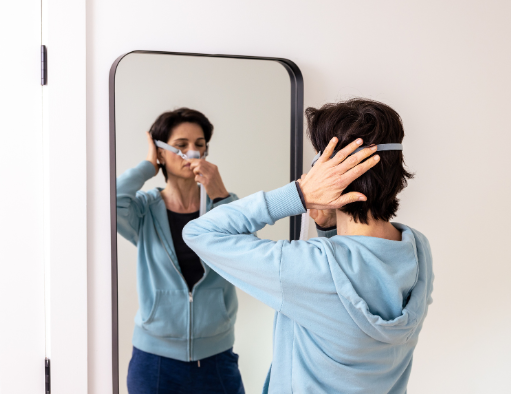

How to avoid it:
• Clean your CPAP mask daily: Use CPAP-specific cleaning products like parts wipes, a CPAP parts sanitizer, or at the very least mild soap and water.
• Use mask liners or gel pads: Reduce friction and improve comfort with a mask liner, which come in many comfortable materials, ranging from cotton to gel.
• Replace mask components regularly: Worn out mask cushions, headgear, and chinstraps can irritate skin.
7. Claustrophobia and Anxiety
What it is: Feeling trapped, anxious, or panicked when wearing your CPAP mask.
Why it happens: The sensation of airflow, mask pressure, and restricted vision can trigger one of the most common problems of CPAP discomfort, especially for new users or those with anxiety.


How to avoid it:
• Practice while awake: Wear your mask while reading or watching TV.
• Choose a more compact CPAP mask: Smaller masks feel less intrusive. If you’re using a full face mask, try switching to a nasal mask or nasal pillow mask. If you’re already using a smaller one, a different mask from a new brand may help fix the anxiety.
• Try Desensitization Therapy: Gradually increase CPAP use over time.
Optional: Ask your provider about CPAP acclimation programs.
What this means for your CPAP treatment
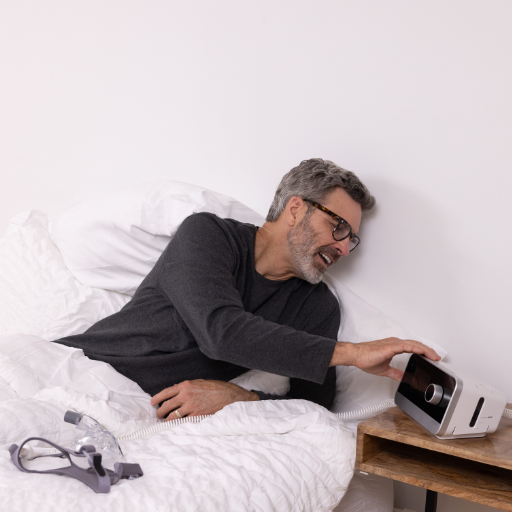

CPAP side effects are common, but they’re also solvable. With the right gear and a few adjustments, you can make your therapy more comfortable, more consistent, and more effective. Since untreated sleep apnea puts your heart, brain, and overall health at risk, finding ways to improve your experience is essential.
Need help finding the right gear? Explore our full line of CPAP masks, humidifiers, comfort accessories, and replacement parts to stay on track with your sleep apnea therapy.

